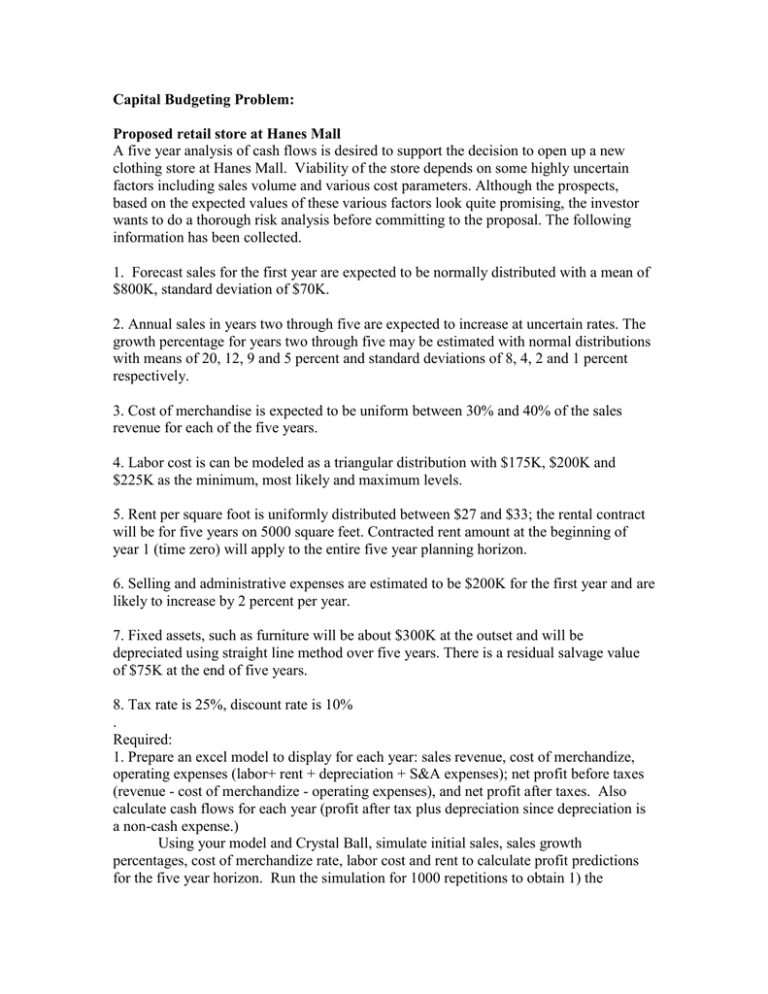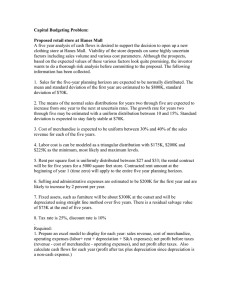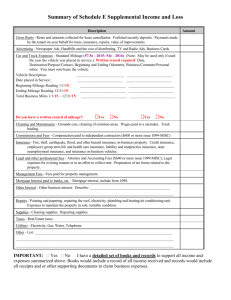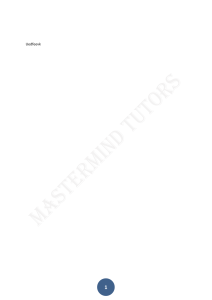Capital Budgeting Problem: Proposed retail store at Hanes Mall
advertisement

Capital Budgeting Problem: Proposed retail store at Hanes Mall A five year analysis of cash flows is desired to support the decision to open up a new clothing store at Hanes Mall. Viability of the store depends on some highly uncertain factors including sales volume and various cost parameters. Although the prospects, based on the expected values of these various factors look quite promising, the investor wants to do a thorough risk analysis before committing to the proposal. The following information has been collected. 1. Forecast sales for the first year are expected to be normally distributed with a mean of $800K, standard deviation of $70K. 2. Annual sales in years two through five are expected to increase at uncertain rates. The growth percentage for years two through five may be estimated with normal distributions with means of 20, 12, 9 and 5 percent and standard deviations of 8, 4, 2 and 1 percent respectively. 3. Cost of merchandise is expected to be uniform between 30% and 40% of the sales revenue for each of the five years. 4. Labor cost is can be modeled as a triangular distribution with $175K, $200K and $225K as the minimum, most likely and maximum levels. 5. Rent per square foot is uniformly distributed between $27 and $33; the rental contract will be for five years on 5000 square feet. Contracted rent amount at the beginning of year 1 (time zero) will apply to the entire five year planning horizon. 6. Selling and administrative expenses are estimated to be $200K for the first year and are likely to increase by 2 percent per year. 7. Fixed assets, such as furniture will be about $300K at the outset and will be depreciated using straight line method over five years. There is a residual salvage value of $75K at the end of five years. 8. Tax rate is 25%, discount rate is 10% . Required: 1. Prepare an excel model to display for each year: sales revenue, cost of merchandize, operating expenses (labor+ rent + depreciation + S&A expenses); net profit before taxes (revenue - cost of merchandize - operating expenses), and net profit after taxes. Also calculate cash flows for each year (profit after tax plus depreciation since depreciation is a non-cash expense.) Using your model and Crystal Ball, simulate initial sales, sales growth percentages, cost of merchandize rate, labor cost and rent to calculate profit predictions for the five year horizon. Run the simulation for 1000 repetitions to obtain 1) the probability distributions for each of the five year’s net after-tax profits; 2) for comparison purposes a trend chart for five years’ after tax profit and 3) probability distribution of the net present value of cash flows. (Hint there will be $300K investment initially, then net cash in-flow (net income + depreciation) for the five years plus the salvage value at the end).





